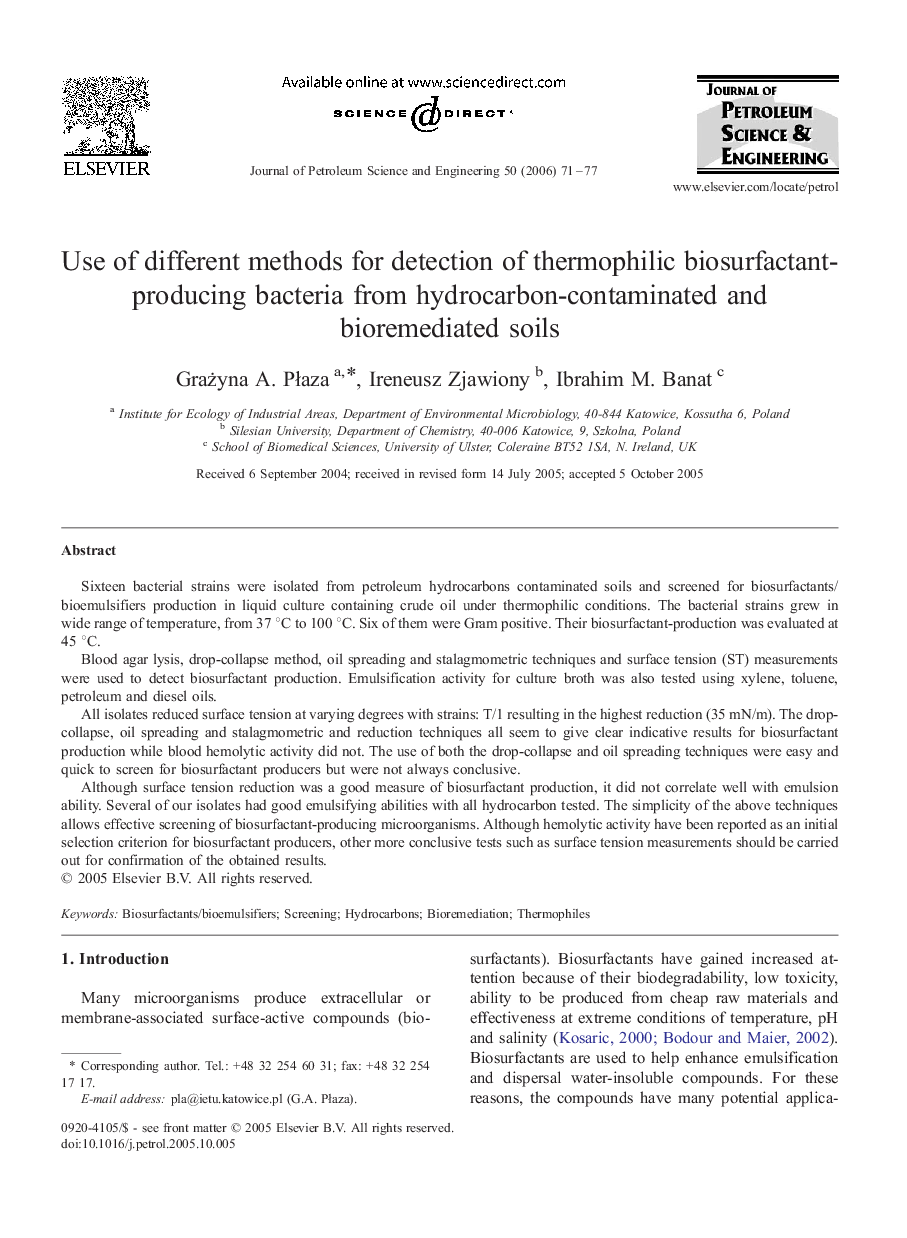| Article ID | Journal | Published Year | Pages | File Type |
|---|---|---|---|---|
| 1756620 | Journal of Petroleum Science and Engineering | 2006 | 7 Pages |
Sixteen bacterial strains were isolated from petroleum hydrocarbons contaminated soils and screened for biosurfactants/bioemulsifiers production in liquid culture containing crude oil under thermophilic conditions. The bacterial strains grew in wide range of temperature, from 37 °C to 100 °C. Six of them were Gram positive. Their biosurfactant-production was evaluated at 45 °C.Blood agar lysis, drop-collapse method, oil spreading and stalagmometric techniques and surface tension (ST) measurements were used to detect biosurfactant production. Emulsification activity for culture broth was also tested using xylene, toluene, petroleum and diesel oils.All isolates reduced surface tension at varying degrees with strains: T/1 resulting in the highest reduction (35 mN/m). The drop-collapse, oil spreading and stalagmometric and reduction techniques all seem to give clear indicative results for biosurfactant production while blood hemolytic activity did not. The use of both the drop-collapse and oil spreading techniques were easy and quick to screen for biosurfactant producers but were not always conclusive.Although surface tension reduction was a good measure of biosurfactant production, it did not correlate well with emulsion ability. Several of our isolates had good emulsifying abilities with all hydrocarbon tested. The simplicity of the above techniques allows effective screening of biosurfactant-producing microorganisms. Although hemolytic activity have been reported as an initial selection criterion for biosurfactant producers, other more conclusive tests such as surface tension measurements should be carried out for confirmation of the obtained results.
